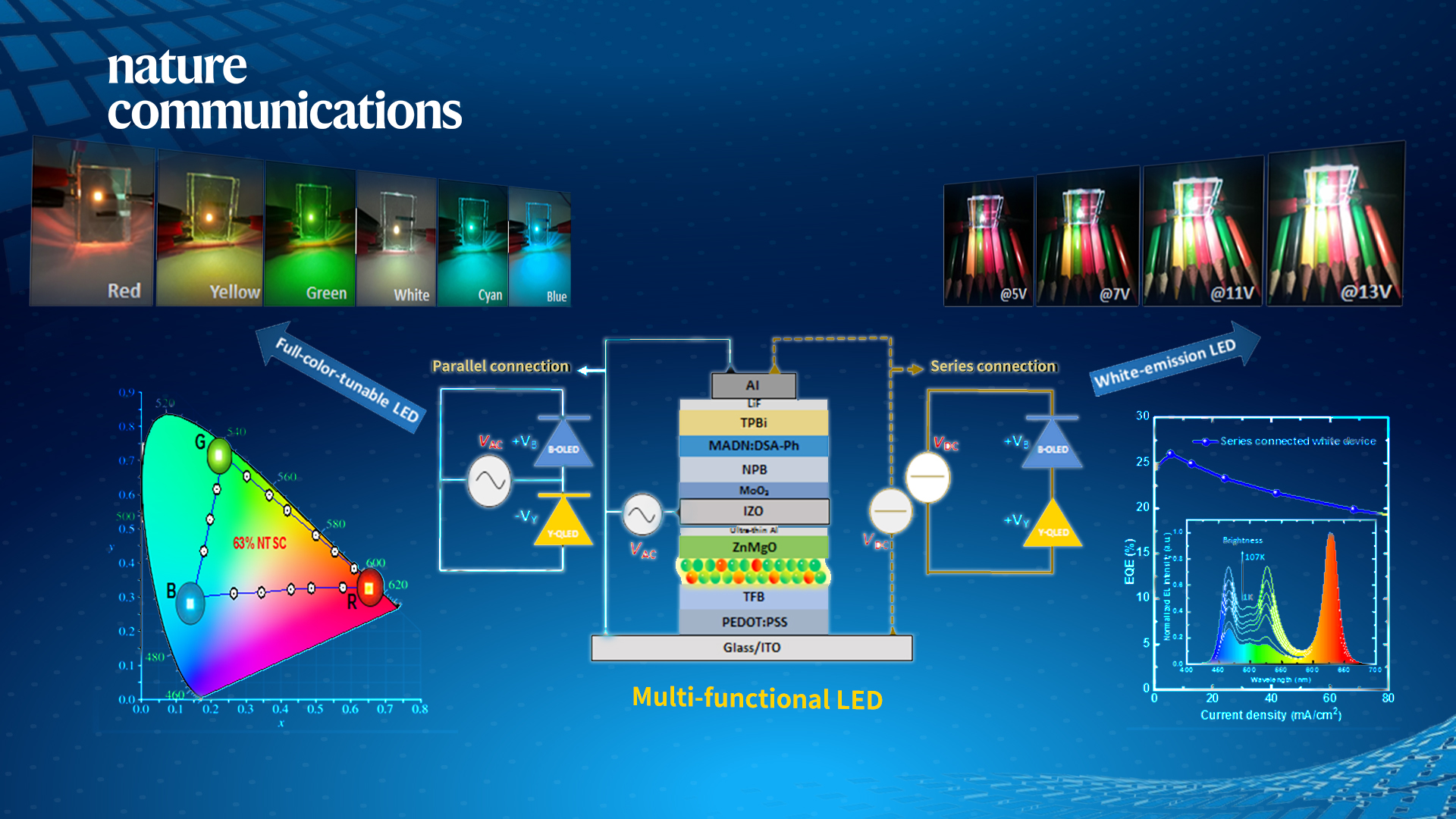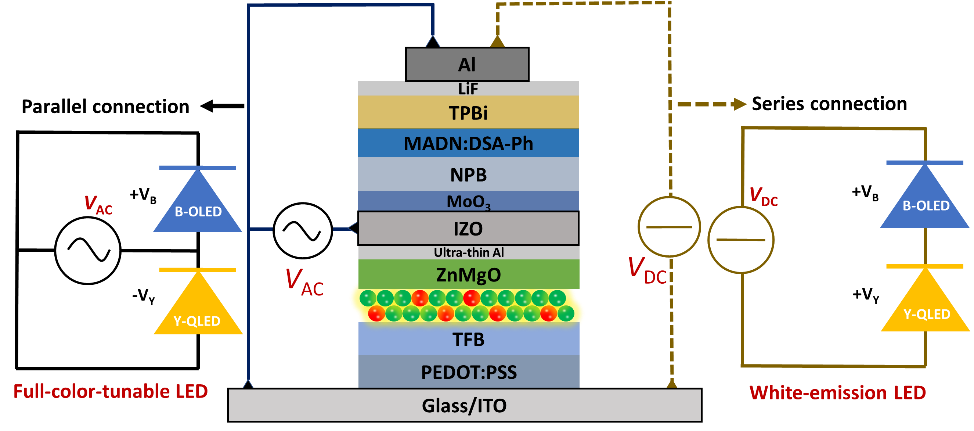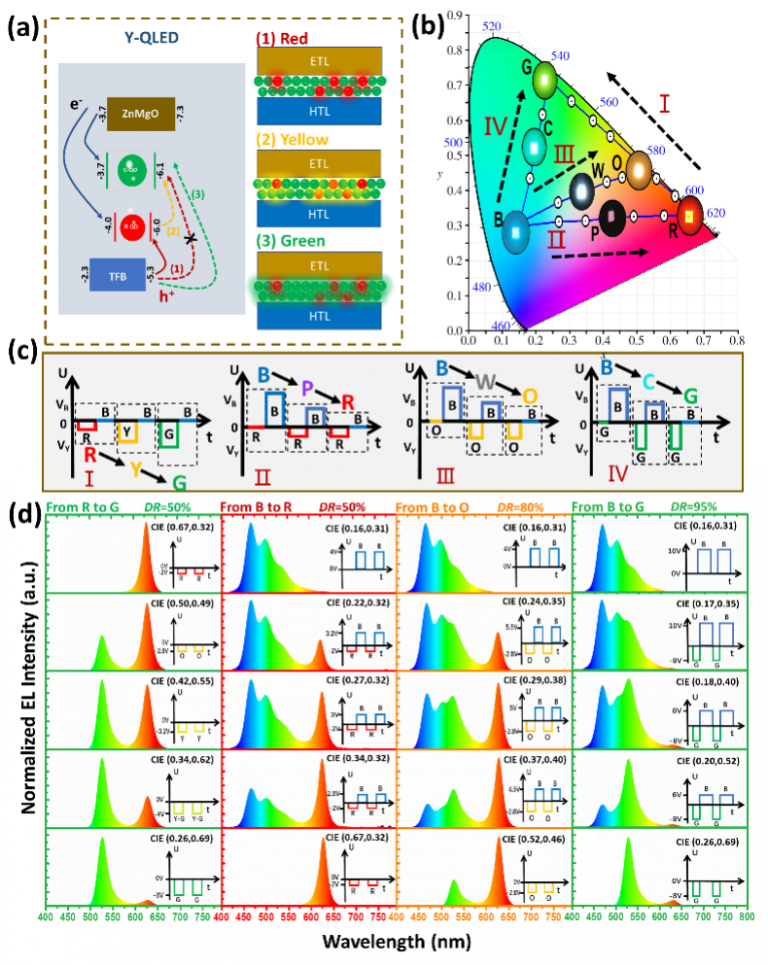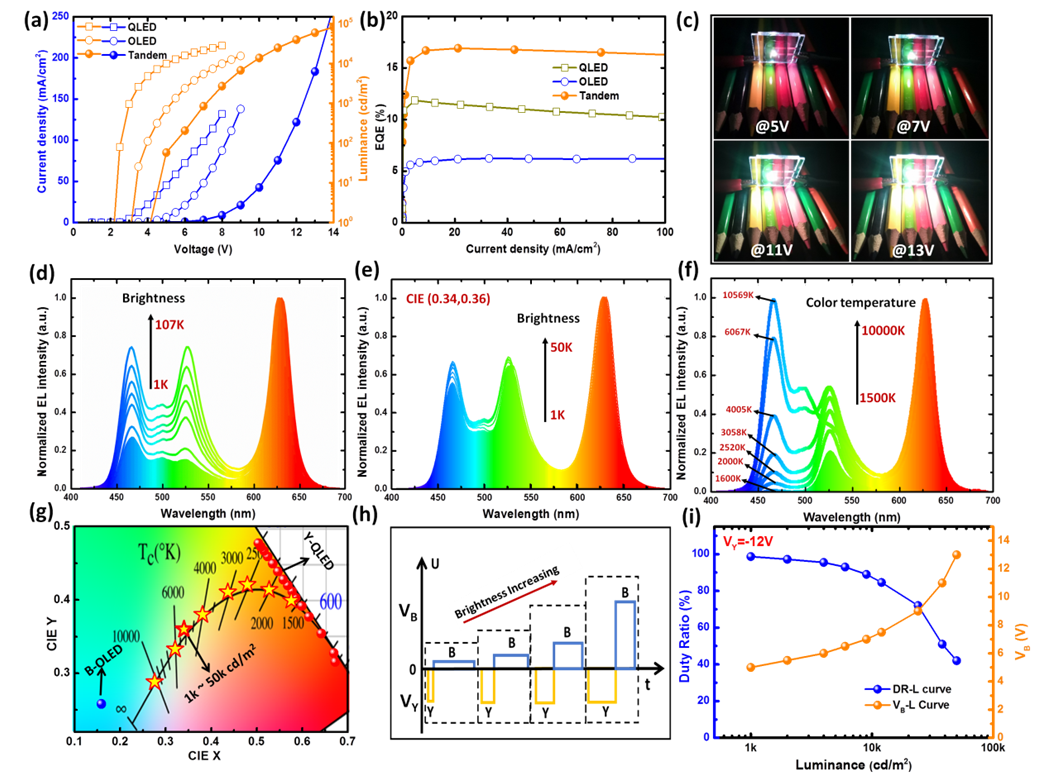The development of quantum-dot and organic hybrid tandem light-emitting diodes (LEDs) has led to progress made in a single LED being able to emit any color. They have the potential to replace traditional RGB LEDs and dramatically improve the resolution and aperture ratio of displays. Research conducted by scientists at Southern University of Science and Technology (SUSTech) has continued to progress the field of quantum-dot LEDs.

On June 4, Associate Professor Shuming Chen (Electrical and Electronic Engineering) led his team to make significant progress through the publication of a paper in the high-impact academic journal, Nature Communications (IF = 11.878), titled “Quantum-dot and organic hybrid tandem light-emitting diodes with multi-functionality of full-color-tunability and white-light-emission.”
CdSe-based quantum-dot light-emitting diodes (QLEDs) have been extensively explored for applications in display and lighting due to their unique merits of high color saturation, tunable emission color, high brightness, and simple solution processability. Recent advances have enabled QLEDs to show high external quantum efficiency (EQE) and long operational lifetime. Although the efficiency of QLEDs could meet the requirements of display applications, the realization of the QLED full-color display remains challenging.

Figure 1. The device structure of a multi-function stacked LED.
One reason is that the blue (B) QLEDs are unstable. By substituting the B-QLEDs with relative stable B organic (O), LEDs can enjoy both the high saturation of QLEDs as well as the high stability of OLEDs. However, integrating QLEDs and OLEDs could be challenging since they come from different families. Another reason is that the inkjet printing, which is used to deposit and pattern the light-emitting layers (EMLs) is far from mature for mass-producing QLED displays. The RGB side-by-side color pixels can also be realized by combining the white devices with patterned color filters (CF). However, the introduction of CFs significantly reduces the brightness of the displays.
A practical approach to eliminate both the absorptive CFs and EMLs patterning is to develop a full color-tunable device. Unfortunately, all the reported full color-tunable devices require four independently addressable electrodes, which complicates the fabrication and the drive circuits.

Figure 2. (a) The principle diagram of the yellow QLED device’s luminous color changes with voltage. (b) to (d) are the CIE graphs, AC voltage signal graphs, and electroluminescence spectrum graphs of the AC drive device luminous color changes from red to green, blue to red, blue to orange, and blue to green, respectively.
The research team aimed to develop a two-terminal, full color-tunable LED that combines B-OLED and R/G-QLED. They could demonstrate a multi-functional hybrid tandem LED by stacking a yellow (Y) QLED with a B-OLED using indium–zinc oxide (IZO) intermediate connecting electrode (ICE). Due to the introduction of ICE, the Y-QLED and B-OLED can be connected in series or parallel. Under parallel connection and alternate-current (AC) driving, a full-color-tunable LED with the emission colors covering a 63% NTSC color triangle is achieved. Under series connection and direct current (DC) driving, an efficient white-light-emission LED with a peak EQE of 26.02% is obtained. By using a novel AC driving method, the white LED can emit stable colors with color coordinates fixed at (0.34, 0.36) over a wide range of brightness (1000~50000 cd/m2). Also, the color coordinates can be tuned to trace the blackbody locus over a wide range of correlated color temperatures (1500 ~10000 K). We believe this hybrid tandem LED could find potential applications in both full-color-display and solid-state-lighting.

Figure 3. (a) to (d) are the photoelectric performance of the stacked white light device under DC driving. (e) to (g) are the optical properties of the stacked white light device during AC driving.
Previous papers have been published in Advanced Functional Materials (IF =15.621), ACS Nano in 2018 and 2019 (IF = 13.903), and Advanced Science (IF = 15.804).
Doctoral candidate Heng Zhang is the first author of the paper, and Shuming Chen is the only correspondent author, with SUSTech as the only communication unit of the paper. This work was supported by the National Natural Science Foundation of China, the Guangdong Natural Science Funds for Distinguished Young Scholars, and the Guangdong Special Funds for Science and Technology Development.
Link to paper: https://www.nature.com/articles/s41467-020-16659-x
Proofread ByYingying XIA
Photo ByDepartment of Electrical and Electronic Engineering, Yan QIU